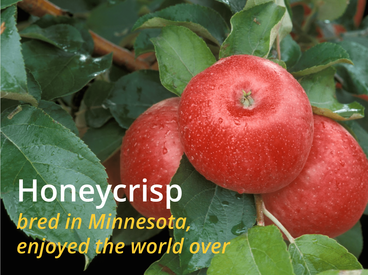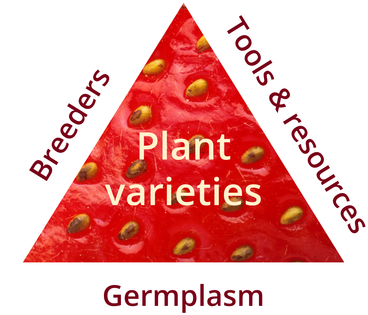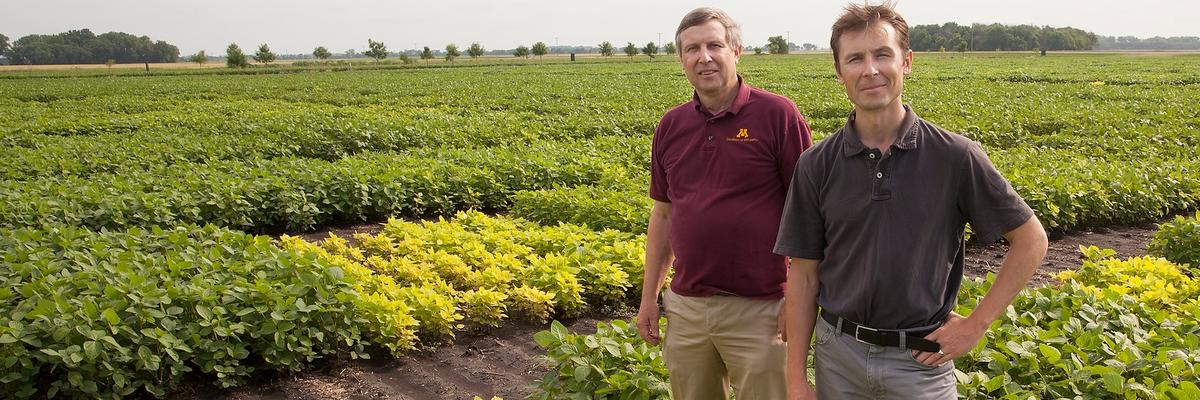
Plant breeding is the genetic improvement of plants for human benefit. These human benefits have traditionally included:
- Food, as in apples and wheat
- Feed, as in alfalfa for cattle and soybean for chickens
- Fiber, as in cotton for our clothes
- Fuel, as in corn for ethanol
- Fun, as in chrysanthemum for our gardens and turfgrass for golf courses

Emerging uses include breeding crops to help mitigate climate change and protect the environment, as in cover crops that protect the soil during the non-summer months when farmland otherwise remains bare.

The University of Minnesota has had a long history of breeding plants for human benefit. Here are three prominent examples:
- Thatcher hard red spring wheat (released in 1935) was resistant to stem rust and became the predominant wheat variety in the U.S. Northern Great Plains and in the Canadian Prairies until the mid-1960s;
- A632 corn parental line (released in 1961) was used in 15% of the U.S. hybrid crop in the 1970s and helped expand the U.S. Corn Belt northward; and
- Honeycrisp apple (released in 1991) is known and enjoyed around the world for its “well-balanced sweet-tart taste, and explosively crisp, juicy texture.” Honeycrisp was fittingly named the State Fruit of Minnesota in 2006.
Plant varieties are successfully developed only if three key elements are all present:

Today, faculty and staff at the Plant Breeding Center continue to develop germplasm and varieties of different agronomic and horticultural crops grown in Minnesota, across the U.S., and around the world. Faculty at the Plant Breeding Center educate and train M.S. and Ph.D. students to become breeders. Scientific knowledge and breeding tools and resources are generated in diverse subdisciplines important in plant breeding, including genomics, gene editing, transcriptomics, epigenetics, cytogenetics, marker-assisted breeding, genomewide prediction, statistical genetics, computational biology, phenomics, and breeding methodology.
